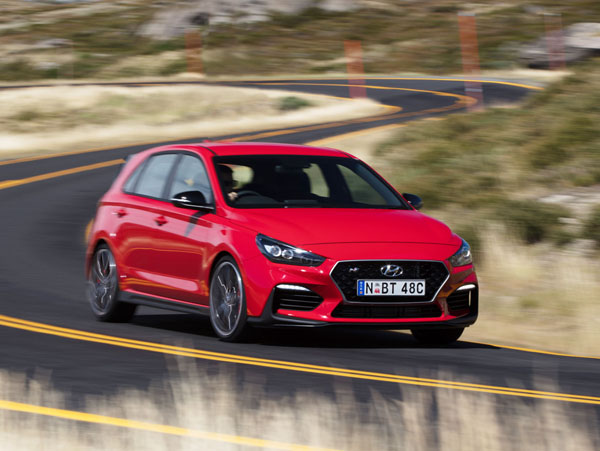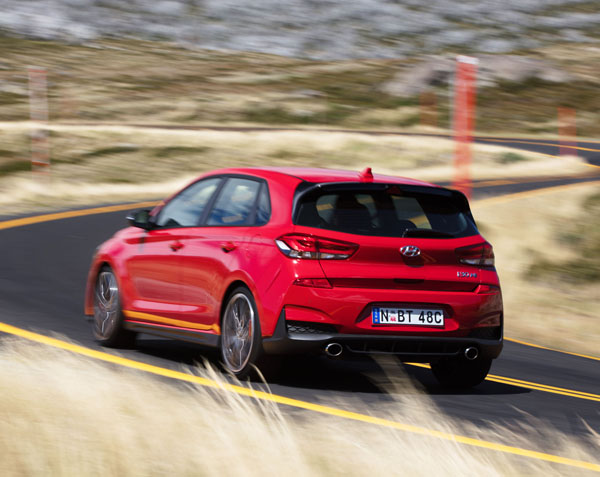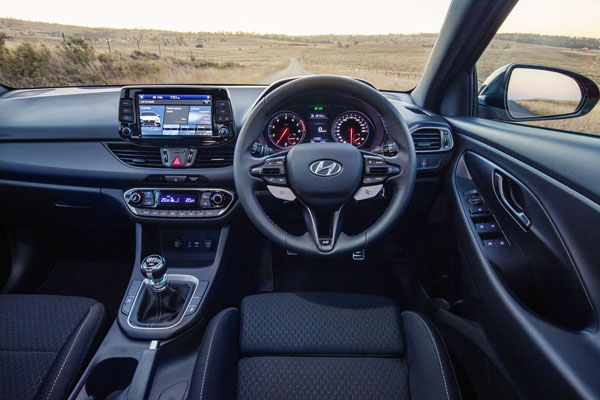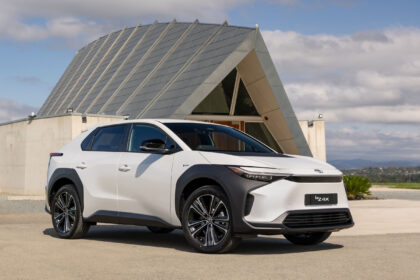
Hyundai i30 N is the first hot-hatch from a South Korean marque and is a brilliant initial attempt.
Never a company to be afraid to ask for help in any new project, Hyundai employed experts from other brands, with a designer from Audi and an engineer from BMW becoming major assets for the Koreans in recent years. As is the norm these days, Hyundai development work was also done in Australia by Aussies and Koreans. In particular suspension and steering tuning but also hot weather testing where many thousands of kilometres were racked up Downunder.
Hyundai’s ’N’ Performance Division is named for both the Namyang R&D Centre in South Korea as well as the famed Nurburgring in Germany where Hyundai has another test centre.
The Euro influence is further emphasised by the fact that the i30 N is built in Europe at Hyundai Motor Manufacturing in Nosovice, Czech Republic.
STYLING
The N styling takes the standard i30 hatch and adds genuine aero aids to improve stability and downforce. A front under-bumper, serious side skirts, flics on the rear guards and a rear wing that wraps down the edges of the rear window all play their part.
There’s no doubt the styling of Hyundai i30 N certainly separates it from the rest of the i30 range as witnessed by long looks on our test car during the week we had it on the Gold Coast. Car guys and gals in these parts do know their stuff.
Hyundai has gone for high-performance Pirelli P-Zero HN 235/35×19 tyres were developed specifically i30 N. They certainly look the part.
Inside the i30 N is a pair of cloth-upholstered sports front seats, a leather-trimmed steering wheel, alloy pedals, an ’N’ race computer and gearshift lights.
POWERTRAINS
Such is Australian drivers’ taste for high-performance variants that the i30 N comes to us only in the hottest version. That is the 202 kW ’Performance’ model that is the equivalent to the i30 N ‘Performance Package’ vehicle sold elsewhere.
The engine is a 2.0-litre turbo-petrol four-cylinder that delivers 202 kW (270 horsepower), and 353 Nm of torque from 1450 to 4700 revs. Using overboost, maximum torque can be as high as 378 Nm (1750 – 4200 revs) for up to 18 seconds. That’s way longer than the typical overboost time from other makers. (More about this later in the Driving section of this review.)
Drive to the front wheels is though a six-speed manual gearbox. The i30 N’s electronically controlled mechanical limited slip differential (E-LSD) is aimed at increasing cornering speeds by up to five percent.
An eight speed double-clutch automatic transmission is under development and is expected to be introduced in late 2019. We can’t say we are hanging out for it, though.
INFOTAINMENT
The car’s 8.0-inch touchscreen is easy to see and use and doesn’t get in the way of the driver’s vision.
Hyundai i30 N is well equipped, with satellite navigation system, Apple CarPlay and Android Auto compatibility. A wireless inductive charging pad for mobile phones is part of the Luxury Pack option.
DRIVING
We have previously tested the hot Hyundai on track and seriously winding country roads, but we had to come down reality some time. So the i30 N was tested in everyday conditions of traffic, shopping centre car parks and the like. With a couple of blasts along our country roads just for the hell of it.
Engine performance is aided by the fact that there is minimum turbo lag. And when maximum boost arrives there’s plenty of push in the back. There’s a touch of tyre shriek if you really do get stuck into the loud pedal in first gear. Love it!
Fuel consumption was on the high side, in the 10 to 12 litres per hundred kilometres range in day-to-day driving, over 12 litres when really pushed, but dropping to a reasonable eight to nine litres per 100 km on the motorway.
But why talk about consumption when turning fuel into fun is the name of the game?
The gearbox could be better in its feel, it really doesn’t seem any different to us than in the standard car. Perhaps this is something that the engineers are working on and we will see it as part of a midlife update. Stay tuned.
Rev matching is appreciated if you’re feeling lazy around town. Note that it is automatically off when you start the engine, so if you don’t like it there’s no need dismiss it.
Sound output can be improved by selecting from several modes on an active variable exhaust system. However, we would have preferred even more noise.
Hyundai’s Electronically Controlled Suspension (ECS) independently manages front and rear body-roll, as well as pitch and dive. It can be adjusted by the driver through the 8.0-inch touchscreen, with settings across a wide range, from comfort-oriented daily driving to high-intensity track work.
The new i30 N also features an Electronic Stability Control (ESC) system with optional ‘Sport’ and ‘Sport+’ modes. Sport+ deactivates ESC altogether and allows for left foot braking.
Steering feel is very good and the car really does signal what is happing by way the steering wheel and the seat of your pants.
The sports oriented seats provide good support for someone of my frame, which is about average. I’ve long been in favour of cloth seats instead of leather ones in all cars and particularly appreciated them in the hot Hyundai.
Ride comfort is generally good, but it came as no surprise that it can be rather firm at times, which is acceptable in a car in this performance class.
SUMMING UP
Hyundai i30 N is a brilliant first effort from the very ambitious South Korean marque. It has already scored high places, or top spot, in comparison testing by major magazines and websites and it’s not hard to understand why.
AT A GLANCE
SPECIFICATIONS (Hyundai i30 N Performance 2.0-litre turbo-petrol five-door hatch)
MODEL RANGE
i30 N Performance: $39,990 (manual)
Note: This price does not include government or dealer delivery charges. Contact your local Hyundai dealer for drive-away prices.
ENGINE:
Capacity: 1.998 litres
Configuration: Four cylinders in line
Maximum Power: 202 kW @ 6000 rpm
Maximum Torque: 353 Nm @ 1450 rpm
Fuel Type: Premium unleaded
Combined Fuel Cycle (ADR 81/02): 8.0 L/100km
CO2 Emissions: 186 g/km
DRIVELINE: Six-speed manual
DIMENSIONS, WEIGHT AND CAPACITIES:
Length: 4335 mm
Wheelbase: 2650 mm
Width: 1798 mm
Height: 1447 mm
Turning Circle: 11.6 metres
Kerb Mass: 1509 kg
Fuel Tank Capacity: 50 litres
BRAKES:
Front: Ventilated disc
Rear: Ventilated disc
STANDARD WARRANTY:
Three years / unlimited kilometres












